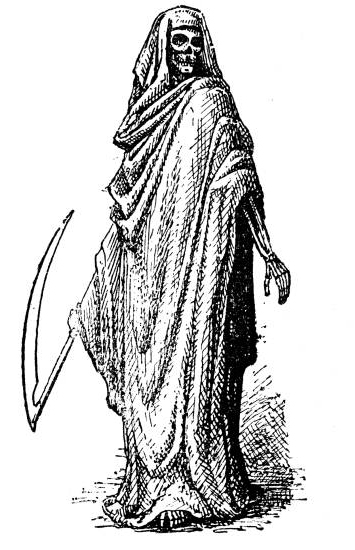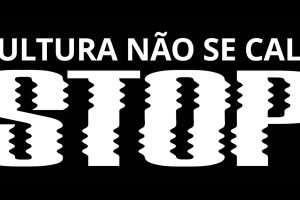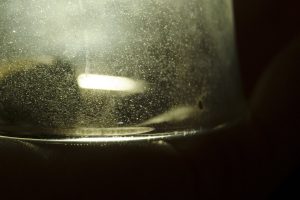Darkwave is a very peculiar musical genre. Having originally emerged from the post-punk and new wave movements of the late 1970s, darkwave features soundscapes based on minor key tonalities, as well as introspective, melancholic and at times, somber vocals, which gave birth to brilliant artists and bands such as Siouxsie and the Banshees, Cocteau Twins and Dead Can Dance. More recently, darkwave has been spearheaded by a number of bands and artists that have rekindled the interest in the genre – Boy Harsher, Perturbator, Thief, Drab Majest and Kaelan Mikla are just a few names that have been breathing new life into darkwave. The latest name that takes the genre to delicious new heights is NECRØ, the brand-new project from João Vairinhos, a Portuguese musician with an already renowned career in the electronic arts, whether via his own solo work or in association with artists such as Hélio Morais and Ricardo Remédio, and bands such as Wildnorthe and LÖBO. Having recruited Sara Inglês, the idiosyncratic and memorable singer and keyboardist of the aforementioned Wildnorthe, Vairinhos utilizes his mastery over electronics to conjure a sound universe that could be described as a marriage between a more gruesome Boy Harsher and a more exploratory Perturbator, with slight hints of Nine Inch Nails and Zanias.
Some time ago, we took a look into the eerily beautiful world of NECRØ, exploring their debut EP Death Beats from a purely sonic and lyrical perspective. Since then, we’ve had the chance to converse with João Vairinhos and delve a little bit deeper into what led to the creation of NECRØ, the influences that drove the project both in and outside of music, and what the future holds going forward.
Tell us a bit about the creation of NECRØ – where did the idea to form the project come from and what were some goals you set out for yourself?
The idea to start this project came about after the two remixes I made for songs by FØREST FIRES. Those remixes happened after Vénia was released and, at the time, I needed some distance from the approach I explored on that record. I was at the beginning of my collaboration with Wildnorthe and, in a very natural way, began to experiment in recreating these songs by Pedro Barceló with a more “danceable” approach, while maintaining some density and a darker energy. I had the bug to make a record of my own that would be closer to that genre and, during the pandemic, I dedicated myself to it.
What are some of the major influences that drive the creativity of the NECRØ, both inside and outside of music?
The need to deal with a chronic pessimism that continuously takes hold of us as time goes by was the motto for this record. Initially, the record was called Surviving Pessimism and only later did we change it to Death Beats, so the atmosphere of the songs revolves around this idea of trying to survive a quotidian pessimism that is generated by feelings of impotence in changing what we consider wrong, and the search for a kind of “gold over blue” that was taken from us or that slipped through our fingers.
NECRØ’s lyrics also reflect a kind of rush into the abyss but, paradoxically, a will and an attempt to deal with and overcome this kind of weight that accompanies us, an attempt to “find peace in a fire pit”. In musical terms, I can say that Belief Defect and John Carpenter are an influence on everything I do, and Years of Denial are a closer influence on NECRØ in particular
“Initially, the record was called Surviving Pessimism and only later did we change it to Death Beats, so the atmosphere of the songs revolves around this idea of trying to survive a quotidian pessimism that is generated by feelings of impotence in changing what we consider wrong, and the search for a kind of “gold over blue” that was taken from us or that slipped through our fingers.”
How was the creative and recording process like for the title-track “Death Beats”? What were some ideas and themes you wanted to explore with it?
Work on that song began from one of the synthesizers and initial markings. I wanted to build a song with antagonistic sensations, and for that, I tried to add a more danceable rhythm to gloomier melodies. I imagined myself walking into a club while the world was burning and I thought about what would be playing at that time, and I used that as a briefing for the song. We already had the title and the expression “knees on our throats” on paper, and Sara [Inglês] finished the lyrics with the structure of the song already done and built the video narrative perfectly with the idea of a “carnage in communion” that is very present in our lives.
For the vocal duties in NECRØ, you enlisted the help of Sara Inglês, with whom you worked previously in Wildnorthe. When you started writing music for this project, did you always intend for it to have vocals or was it something that came later as things progressed?
The initial goal was to create a collaborative EP with several vocalists, one per song. As I already knew Sara, always enjoyed working with her and thought her voice would fit in what I wanted, she was the first invited to record demos. We liked the final result so much that I extended the invitation to the remaining songs that were already lined up and, honestly, it was one of the best decisions made for this project. The completion of the songs was already a joint effort and Sara’s input was extremely invaluable for the final result.
The cover of Death Beats was also designed by Sara Inglês. How far into the recording did you start thinking about the artwork and design? Was it something you worked closely together with Sara?
Sara dedicated herself to the artwork of the EP and the video for “Death Beats” after we completed the record. It made sense for us to create the visual and graphic component after we had the songs and lyrics closed in order to have a coherent narrative between the various dimensions of the EP. Despite the authorship of this section belonging entirely to Sara, there was no unilateral decision, everything was decided in a close and shared way. I had already worked with Sara on the design of Vénia, so I was sure it was in good hands.
Do you always seek to create a connection between the cover of a record and the music within it?
Always. The connection between the music and the cover, videos and promotional photos is a dimension that I do not neglect and is kind of an obsession that I share with Sara. At times, we spend a long time discussing something that seems so small but is very important to us. I say this because I’ve already listened to record because I liked the cover, video or the communication, and the music didn’t have a big impact on me, as I’ve also postponed listening to other records because the communicative and visual component didn’t please me, finding out later that the music is incredible. As I recognize the importance of this common thread between the various aspects that make up a record in my personal experience, I try to ensure that this connection exists. In this regard, Sara’s contribution was fundamental for everything to make sense in the end.
The record was mastered by Pedro Barceló, with whom you have worked previously in Löbo. How was it working with him in Death Beats and what do you think he brings to the table in terms of mastering?
Pedro is a long-time friend. We’ve known each other for over a decade and he was the one who mixed and mastered Vénia with me, so working with him is almost telepathic. There are aesthetic options that we don’t even have to discuss anymore, and that makes everything easier. In addition to mastering the EP, Sara’s voices were also recorded by Pedro, so we can safely say that he played an important role in the final result.
Death Beats is being released via three different record labels – Regulator Records, Zerowork Records and Ring Leader. What prompted you to release Death Beats in three different labels instead of just one?
By default, Regulator Records would always be a strong possibility. The years I spent playing in punk and hardcore bands taught me the importance and advantages of a DIY approach, keeping control over the release of my projects, so Regulator Records will always participate in releases whenever possible. I don’t overlook the idea of releasing on other labels because and international label that is more focused on this genre can ensure that the music reaches more people, but I like to feel at home and having the freedom to publish on Regulator gives me that feeling. The interest from Ring Leader, led by Sérgio Almeida, who will be the sound technician for NECRØ, and the eclectic Zerowork Records of Luís Rattus, who has already released Portuguese projects such as Scúru Fitchádu, was to combine business with pleasure, and I am happy to do the first record in this co-publishing format.
After the release of Death Beats, what does the future look like for NECRØ? Any new music or shows in the works?
Playing live was something that only started to be discussed at a very advanced stage of the EP. The primordial goal when NECRØ took shape was never to play live, but when we started to see the record evolve, we realized that it would be a mistake to leave these songs only in physical and digital formats. We’re working on new tracks and the setup to play songs from the EP live in the short term. We’ve had some interesting feedback in Portugal and abroad; participating in the Cold Transmission compilation helped, so it’s definitely part of the plan.
“We’re working on new tracks and the setup to play songs from the EP live in the short term. We’ve had some interesting feedback in Portugal and abroad; participating in the Cold Transmission compilation helped, so it’s definitely part of the plan.”
Interview by Filipe Silva
Photo by Pedro Roque, courtesy of NECRØ








Leave a Reply
Your email is safe with us.